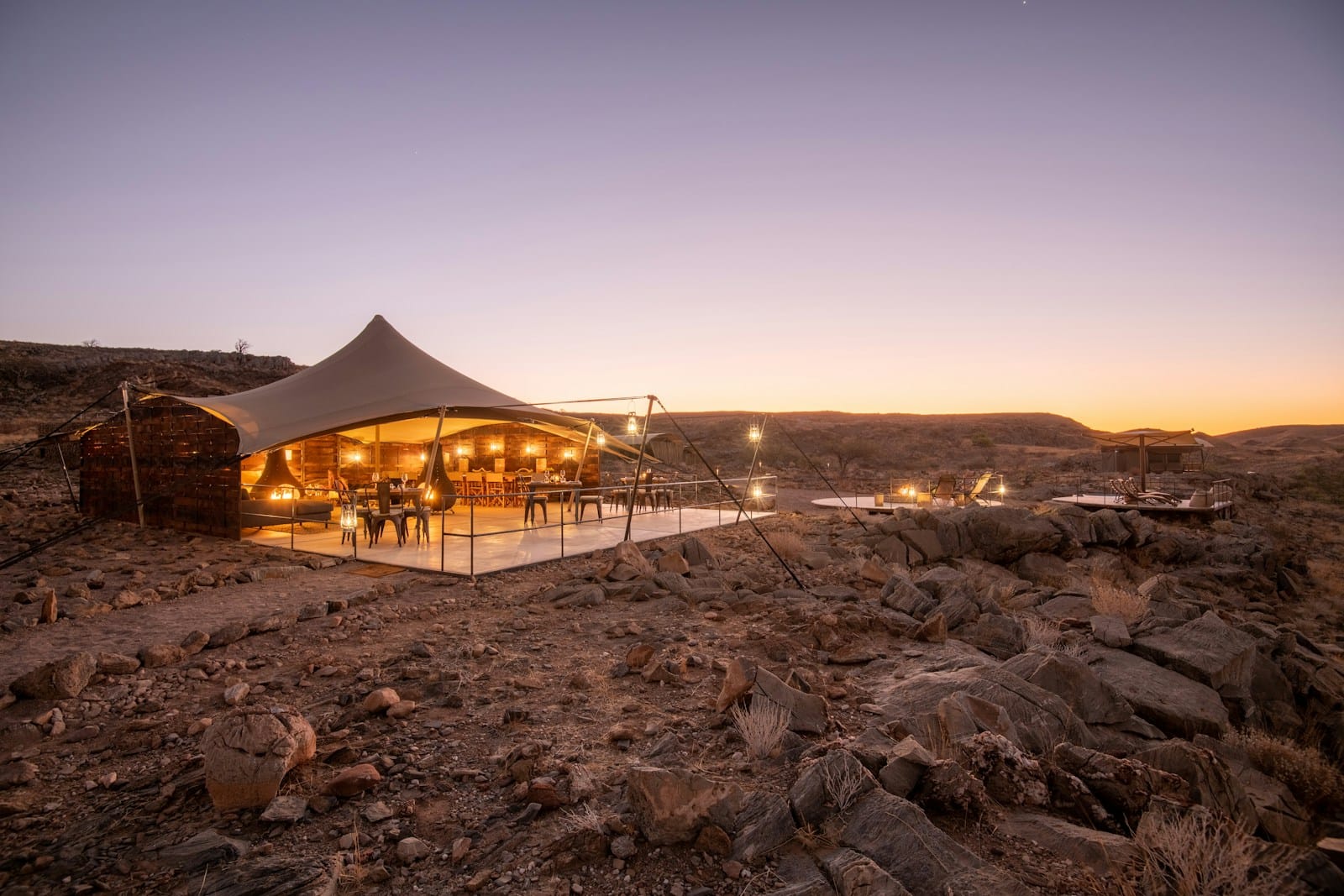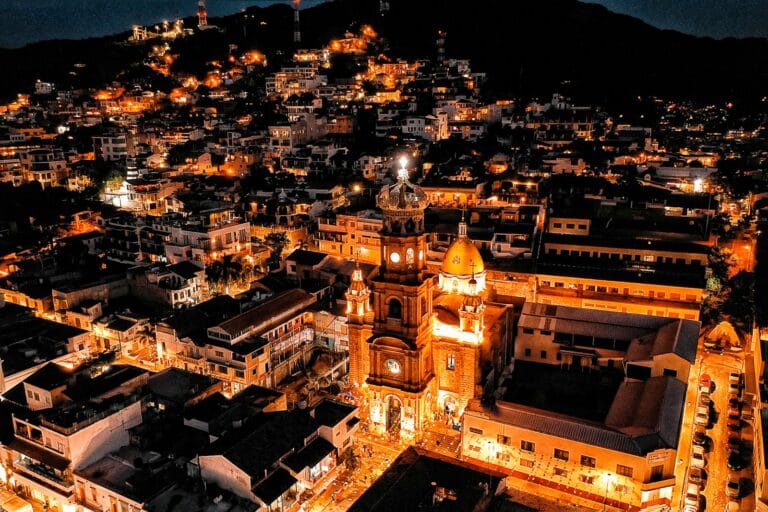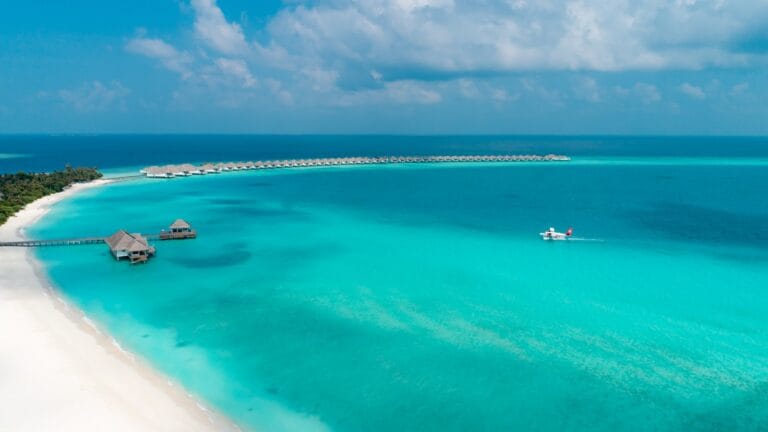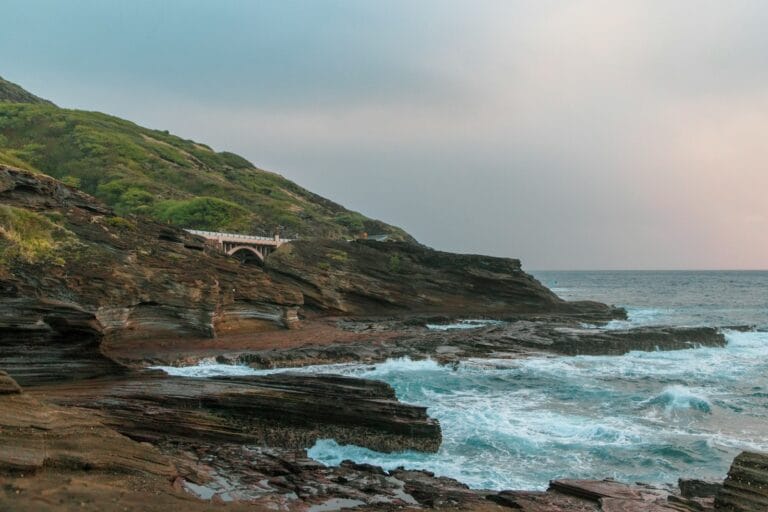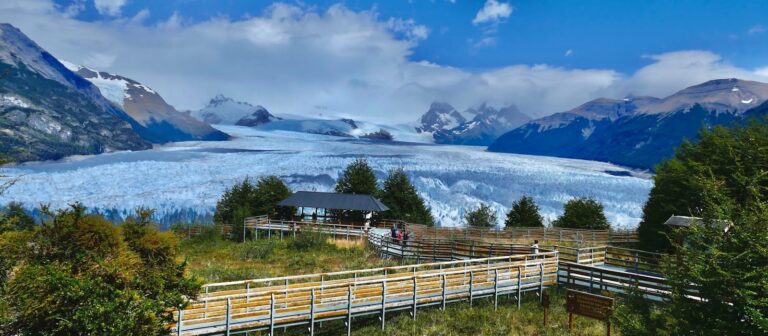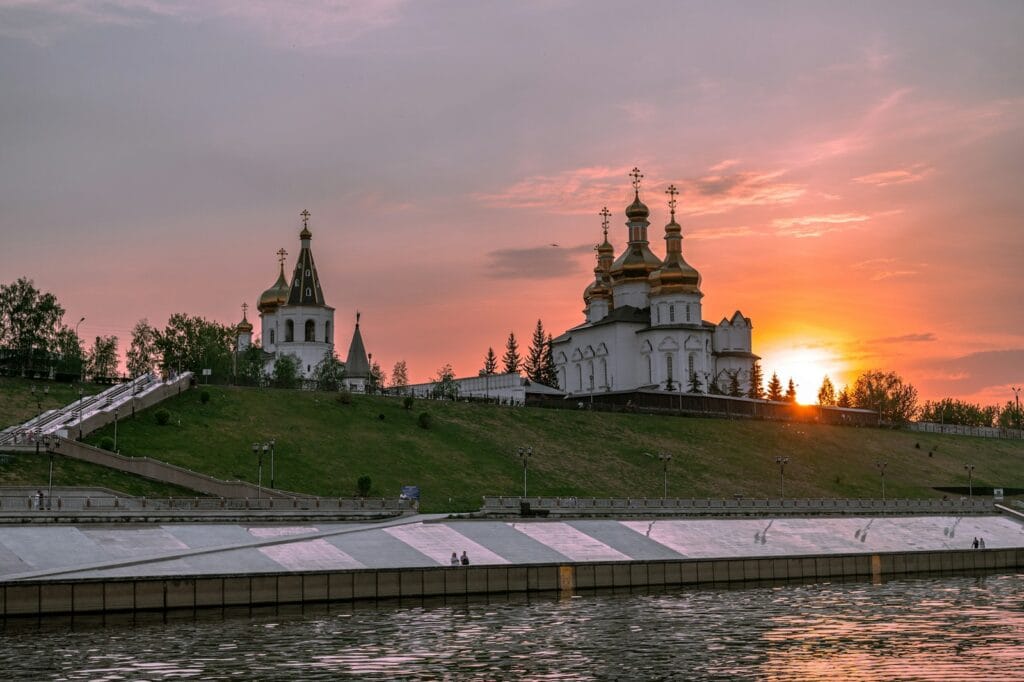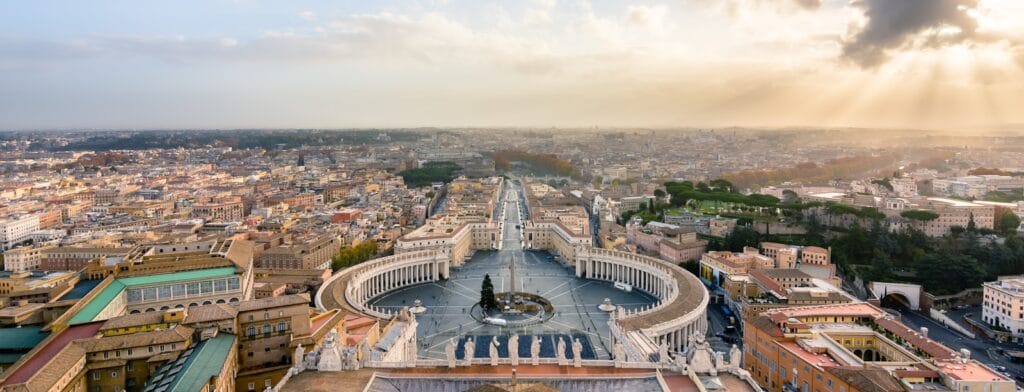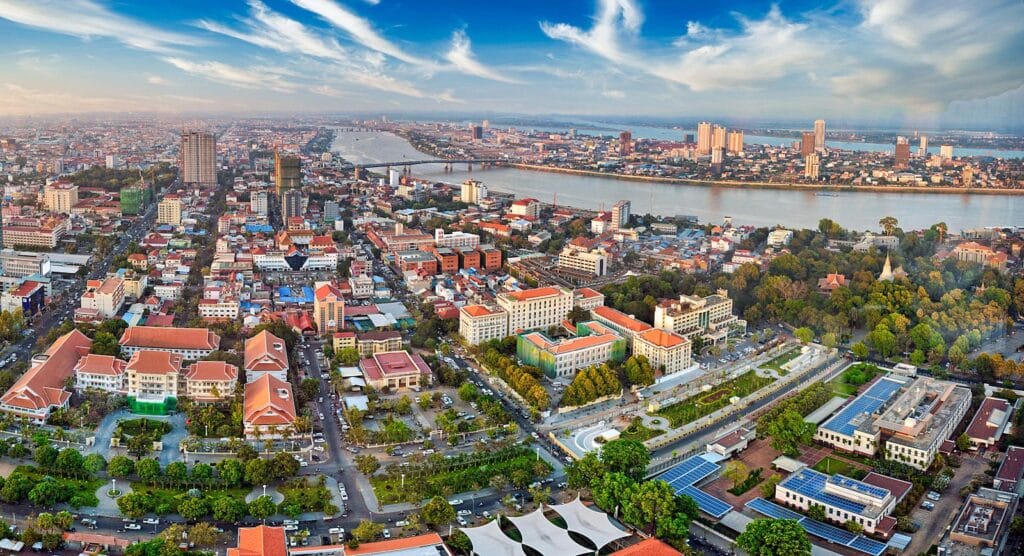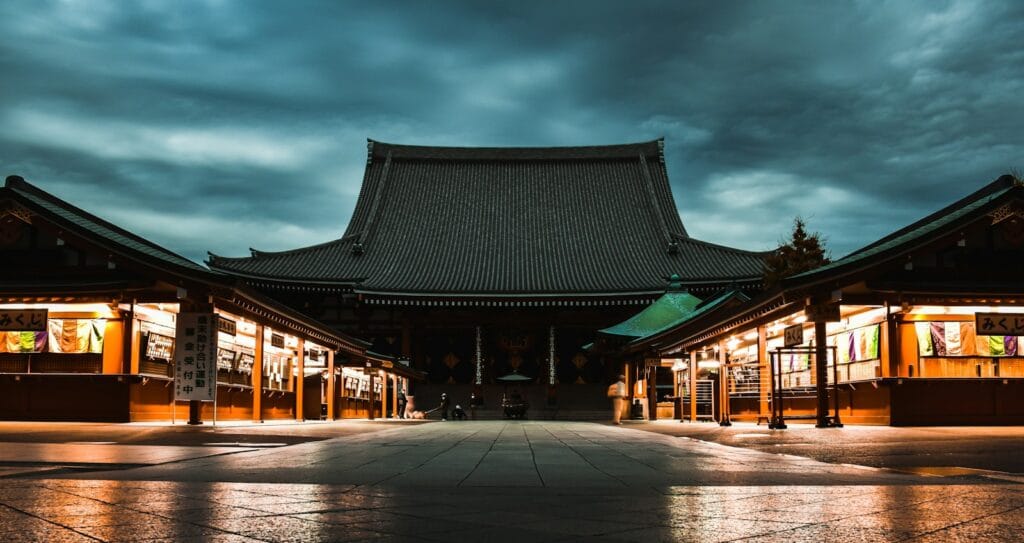Namibia Travel Guide: Where Space, Silence, and Scenery Collide
Intro to Namibia Travel Guide
Picture blood-red dunes at sunrise, herds of elephants at a foggy desert waterhole, and billions of stars scattered across some of the darkest skies on Earth. Namibia is Africa’s wild masterpiece — raw, cinematic, and tailor-made for travelers who crave solitude, scenery, and soulful journeys.
From the shifting sands of Sossusvlei to the wildlife-rich plains of Etosha and tribal culture in the north, this country blends conservation, culture, and cosmic beauty like nowhere else.
Start planning your trip with our complete Namibia Tour Guide — filled with must-see sights, expert tips, and the best routes across its breathtaking regions.
💡Quick Facts:
Continent: Africa
Country: Republic of Namibia
Area: 825,615 km² (318,772 mi²)
Population: ~2.7 million (2024 estimate)
Density: ~3.3 people per km² (one of the least densely populated countries)
Capital: Windhoek
Regions/Subregions: 14 regions including Erongo, Khomas, Kunene, Otjozondjupa, Zambezi, and Oshana
Language(s): English (official); widely spoken local languages include Oshiwambo, Afrikaans, Herero, and Nama
Currency: Namibian Dollar (NAD); interchangeable with South African Rand (ZAR)
Time Zone(s): Central Africa Time (UTC+2)
Airports
– Hosea Kutako International Airport (WDH) – near Windhoek
– Walvis Bay International Airport (WVB)
– Eros Domestic Airport (ERS) – for regional connections
Climate: Desert and semi-arid; hot and dry most of the year with some summer rains (Nov–Mar)
Known For: Namib Desert dunes, Etosha National Park, Skeleton Coast, wildlife safaris, German colonial architecture, and stargazing
🛂Arrival Info:
– Visa-free for up to 90 days for U.S., UK, EU, Canada, Australia, and many others
– Passport must be valid for at least 6 months
– Return/onward ticket and sufficient funds may be requested
– Namibia Visa & Immigration Info
💉Health Info:
– Recommended: Hepatitis A, Hepatitis B, typhoid, and rabies (for rural travel)
– Malaria risk in northern and eastern regions (e.g., Zambezi, Kavango) — prophylaxis advised
– No yellow fever certificate required unless arriving from endemic area
– Clean drinking water available in cities; bottled water preferred in remote zones
Travel health updates — get coverage here
Stay Informed with Official Updates: World Health Organization – International Travel and Health | Centers for Disease Control and Prevention – Global Travel Health
🚨Travel Advisory:
– Stable and safe country; exercise normal precautions
– Petty crime (pickpocketing, car break-ins) possible in urban centers
– Avoid travel at night in rural areas due to wildlife and poor visibility
Stay Informed with Official Updates: US Travel Advisory | UK Foreign Travel Advice
📅Holidays:
– Independence Day: March 21
– Heroes’ Day: August 26
– Cassinga Day: May 4
– Christmas: December 25
– Africa Day: May 25
💰Money Matters:
– Currency: Namibian Dollar (NAD) – pegged 1:1 with South African Rand
– Credit/debit cards accepted in cities and tourist lodges
– ATMs widely available in urban areas
– Tipping is customary for guides (10%) and service staff
– Duty-free: 1L spirits, 2L wine, 200 cigarettes, and gifts under NAD 1,250
✈️Airports:
– Hosea Kutako International Airport (WDH): main international entry point
– Domestic flights via Eros Airport (ERS)
– Walvis Bay (WVB) and Ondangwa (OND) serve regional connections
Namibia Airports
🚍Transport:
– Best explored via self-drive (4WD recommended for gravel/sand roads)
– Drive on the left
– Gas stations are scarce in remote areas — plan routes carefully
– Intercity buses available but limited in frequency
– Domestic flights and airstrips connect remote lodges and parks
📶Connectivity:
– Good mobile coverage in cities; weak or no signal in remote parks/deserts
– Providers: MTC and TN Mobile
– Prepaid SIMs available with passport
– Wi-Fi in hotels and lodges (speed varies by location)
📜Laws & Etiquette:
– Respect for wildlife and national park rules is strictly enforced
– LGBTQ+ travelers welcome, though open affection is uncommon
– Tipping appreciated but not mandatory
– Photography of government/military sites is prohibited
– Carry ID or passport copy when driving
🛡️Emergency Info:
– Emergency: Police 10111, Ambulance 2032276 (Windhoek)
– Hospitals in Windhoek, Swakopmund, and Oshakati; basic clinics in rural areas
🌦️Weather:
– Best time to visit: May to October (cooler dry season — ideal for wildlife viewing)
– Rainy season: November to March (hot, occasional thunderstorms)
– Coastal areas (e.g., Swakopmund) are cooler year-round
Weather Forecast
Namibia by Region – Where to Go
Namibia’s terrain stretches from deserts to wetlands, with each region offering a totally distinct travel experience.
Central Namibia: Windhoek, Sossusvlei & Namib-Naukluft
- Windhoek, the capital, blends modern convenience with German colonial charm — great for restocking or starting safaris.
- Sossusvlei, in the Namib Desert, is home to the world’s tallest dunes and surreal landscapes.
- Namib-Naukluft National Park is a photographer’s dream, from Deadvlei’s ancient trees to the pastel mountains of the Naukluft.
Northern Namibia: Etosha, Damaraland & Zambezi Region
- Etosha National Park offers unmatched wildlife viewing around its shimmering salt pans — one of Africa’s top safari spots.
- Damaraland is rugged and cultural, home to desert elephants, ancient rock art, and Himba communities.
- The Zambezi Region (formerly Caprivi Strip) contrasts completely — think hippos, lush rivers, and boat-based safaris near Botswana.
Southern Namibia: Fish River Canyon, Luderitz & the Karas Region
- Fish River Canyon, second only to the Grand Canyon, is ideal for hikers and stargazers.
- Lüderitz delivers a quirky coastal mix of German heritage and eerie ghost towns like Kolmanskop.
- Aus and the Karas Mountains reveal wild horses and high desert plateaus.
Western Namibia: Skeleton Coast & Kaokoland
- The Skeleton Coast is haunting and dramatic — shipwrecks, dunes, and fog-bound beaches.
- Kaokoland is remote and deeply cultural, where you can visit traditional Himba villages and explore vast, empty terrain.
Eastern Namibia: Kalahari & Bushmanland
- The Kalahari Desert offers red-sand dunes and wildlife adapted to arid terrain.
- Bushmanland is where San communities still practice traditional skills and tracking — a deeply authentic cultural experience.
Top Places to Visit in Namibia
These highlights span wildlife, landscapes, and rare cultural encounters.
Nature & Desert Wonders
- Sossusvlei & Deadvlei: Climb Big Daddy dune at dawn, then explore white clay pans with 900-year-old tree skeletons.
- Fish River Canyon: Hike or drive along Africa’s largest canyon with epic viewpoints.
- Kolmanskop: An abandoned diamond-mining town half-swallowed by sand — perfect for surreal photography.
Wildlife & Safaris
- Etosha National Park: See lions, elephants, giraffes, rhinos, and more around waterholes and salt pans.
- Zambezi Region: Enjoy river safaris and birdwatching in wetland-rich parks like Bwabwata.
- Damaraland: Track desert-adapted elephants and visit rhino conservation zones.
Cultural Encounters
- Opuwo & Kaokoland: Meet semi-nomadic Himba communities in one of Africa’s most remote regions.
- Bushmanland: Experience traditional San tracking, storytelling, and hunter-gatherer knowledge.
- Lüderitz: Visit Art Nouveau buildings, German bakeries, and the windswept Lutheran church on the hill.
Coastal Adventures
- Swakopmund: A beach resort town with German influence, seafood cafes, and desert sports.
- Walvis Bay: Spot flamingos and dolphins, then kayak with seals or quad-bike over dunes.
- Skeleton Coast: Self-drive to shipwrecks or join fly-in safaris for the most remote stretches.
How to Choose Where to Go in Namibia
Namibia’s vast distances make smart route planning essential. Here’s how to narrow it down.
- For first-time visitors or wildlife lovers
- Focus on a loop from Windhoek → Etosha → Swakopmund → Sossusvlei — scenic, wildlife-rich, and well-supported.
- Add Damaraland for a deeper cultural layer and desert elephants.
- For off-the-grid adventurers
- Go north to Kaokoland and Skeleton Coast with a 4×4 and pre-arranged camping permits.
- Add fly-in safaris to Serra Cafema or private conservancies.
- For photographers and nature buffs
- Spend time in Sossusvlei, Kolmanskop, and Fish River Canyon for otherworldly light and drama.
- Visit during golden hour — Namibia’s skies are a dream.
- For cultural explorers
- Combine Bushmanland, Damaraland, and Kaokoland to engage with San and Himba communities.
- Avoid overly packaged village tours — seek ethical, small-scale operators.
- For a river-and-wetland contrast
- Head east to the Zambezi Region for boat safaris, lush greenery, and easy access to Botswana or Zambia.
- Pair with Victoria Falls or Okavango Delta for extended regional travel.
How to Get Around Namibia
Namibia is vast, remote, and tailor-made for epic self-drives — but it also offers fly-in options and tour support.
Self-Drive
• Most travelers rent a 4×4 — essential for gravel roads, dunes, and remote regions like Damaraland or Kaokoland.
• Main roads (B-roads) are paved and in good condition; C-roads are gravel but generally manageable.
• Wild camping is popular, with well-maintained sites across national parks and private reserves.
Guided Tours
• Group and private tours run from Windhoek and Swakopmund to Etosha, Sossusvlei, and beyond.
• Good for travelers short on time or nervous about solo navigation.
• Look for safari combos that include Botswana or Victoria Falls.
Fly-In Safaris
• Small aircraft connect luxury lodges in Skeleton Coast, Damaraland, and Zambezi.
• Expensive but ideal for accessing Namibia’s most remote and scenic areas.
Shuttles and Transfers
• Long-distance buses (Intercape) connect major towns, but don’t access remote parks.
• Shared shuttles between Windhoek and Swakopmund or Etosha are available, though limited.
Travel Budget & Costs in Namibia
Namibia can suit both budget adventurers and luxury safari seekers — but self-driving is often the most cost-effective option.
Average Daily Costs
• Budget traveler: $50–$80/day (camping, self-drive, groceries)
• Mid-range traveler: $120–$250/day (guesthouses, car rental, park fees)
• Luxury traveler: $400–$1,200/day (fly-in safaris, lodges, private guides)
Sample Prices
• 4×4 rental with camping gear: $60–$110/day
• Etosha park entry: $6 per person/day + $3 per vehicle
• Budget guesthouse: $40–$70/night
• Mid-range lodge with meals: $100–$300/night
• Fuel: $1.00–$1.20/liter (long distances = high total cost)
Tips for Saving
• Cook your own meals when camping or staying in self-catering lodges.
• Visit in shoulder season (April–May or October–November) for lower lodge prices.
• Share vehicle costs with travel partners or join group camping tours.
Best Time to Visit Namibia
Namibia is a year-round destination — but seasons can shape your experience.
Dry Season (May to October)
• Peak for wildlife viewing — animals gather at Etosha waterholes.
• Best for self-driving — roads are dry and skies are clear.
• Cool evenings and warm days, especially in highlands and deserts.
Green Season (November to April)
• Occasional rain turns landscapes lush and green — beautiful for photography.
• Birdwatching is excellent, especially in the Zambezi Region.
• Some remote roads may become challenging, especially during heavy rains.
Seasonal Highlights
• May–July: Great for stargazing and cool desert hiking.
• August–October: Prime time for Etosha wildlife and Skeleton Coast adventures.
• January–March: Rainy season; best for fewer tourists, but watch for muddy roads.
Must-See Experiences in Namibia
Unforgettable Namibia tours and things to do in Namibia span wildlife, landscapes, and cultural depth.
Desert Journeys
• Climb Dune 45 at sunrise, then photograph Deadvlei’s haunting clay pan.
• Sandboard or quad-bike down dunes near Swakopmund.
• Camp under the stars in NamibRand Nature Reserve — a certified dark-sky zone.
Wildlife Encounters
• Spend hours at Okaukuejo waterhole in Etosha as elephants, giraffes, and rhinos arrive at sunset.
• Track desert-adapted rhinos and elephants in Damaraland with local rangers.
• Cruise the Zambezi River in a mokoro or pontoon boat — hippos, crocs, and kingfishers await.
Cultural Exploration
• Visit a Himba village in Kaokoland for an authentic, respectful exchange.
• Learn ancient bushcraft from San guides in Bushmanland.
• Explore German-era churches and cafes in Lüderitz and Swakopmund.
Extreme Landscapes
• Hike into Fish River Canyon, especially early morning for dramatic light.
• Take a scenic flight over Sossusvlei or the fog-drenched Skeleton Coast.
• Explore shipwrecks and seal colonies at Cape Cross.
Book immersive Namibia tours and experience unforgettable things to do in Namibia — from sacred temple rituals and highland treks to floating markets and lakeside food adventures.
Best Travel Itineraries in Namibia
These sample routes suit various travel styles and lengths — all customizable.
7-Day Namibia Essentials
- Windhoek → Sossusvlei → Swakopmund → Etosha → Windhoek
- Covers dunes, coast, and wildlife — ideal for first-timers.
10-Day Safari & Desert Circuit
- Windhoek → Kalahari → Sossusvlei → Swakopmund → Damaraland → Etosha
- Balanced itinerary with scenery, animals, and cultural visits.
14-Day Wild North Adventure
- Windhoek → Etosha → Kaokoland → Skeleton Coast → Damaraland → Windhoek
- For 4×4 travelers seeking remoteness and tribal interaction.
10-Day Zambezi & Victoria Falls Extension
- Etosha → Zambezi Region → Chobe (Botswana) → Victoria Falls (Zambia/Zimbabwe)
- Combine wetlands, safari, and a bucket-list waterfall.
Local Cuisine & Culinary Experiences
Namibian food draws from German, African, and Boer traditions — hearty and meat-heavy but evolving.
Must-Try Dishes
• Kapana: Grilled beef sold at roadside markets — a Windhoek favorite.
• Potjiekos: Slow-cooked meat and vegetable stew in a cast iron pot.
• Braaivleis: South African-style barbecue, widely enjoyed throughout Namibia.
• Omajowa Mushrooms: Giant wild fungi harvested after summer rains.
• Windhoek Lager: National pride — best enjoyed after a long desert day.
Culinary Experiences
• Visit the Single Quarters Meat Market in Katutura (Windhoek).
• Try game meat (oryx, kudu, springbok) at safari lodges or Swakopmund restaurants.
• Tour a farm-to-table bush kitchen in Damaraland or join cooking demos at eco-lodges.
Travel Safety & Cultural Etiquette in Namibia
Namibia is among Africa’s safest and most stable countries — but always travel prepared.
Safety Tips
• Petty crime exists in cities — lock vehicles and don’t flash valuables.
• Avoid driving at night — wildlife and potholes are real hazards.
• Carry multiple tire repair kits and extra water in remote areas.
Cultural Awareness
• Always ask before photographing people, especially in tribal regions.
• Use respectful greetings — English is widely spoken, but a smile goes a long way.
• Tip guides, trackers, and lodge staff — 10% is standard for good service.
Health & Preparation
• Tap water is safe in most towns; use bottled water in rural zones.
• Malaria risk is present in northern regions — bring repellents and prophylaxis if needed.
• Keep fuel topped up and cash handy — cards are not accepted everywhere.
Where to Go Next – Pair Namibia with These Destinations
- Botswana: Just across the Zambezi — ideal for combining Etosha with Chobe or the Okavango Delta.
- South Africa: Drive south into the Northern Cape or fly to Cape Town for a coastal follow-up.
- Zambia: For Victoria Falls and river safaris in Lower Zambezi.
- Angola: An adventurous northern route for experienced travelers.
- Zimbabwe: Add Hwange or Matobo for more safari and cultural contrast.
Expand your trip with these planning guides:
- Botswana Travel Guide
- South Africa Travel Guide
- Zambia Travel Guide
- Zimbabwe Travel Guide
- Okavango Delta Safaris
Final Planning Checklist for Namibia
- Lock in your route — loop or one-way drives with strategic refueling stops
- Book key accommodations early, especially in Etosha and Sossusvlei
- Rent a reliable 4×4 with a second spare tire and camping gear if needed
- Download offline maps and the Tracks4Africa navigation app
- Prepare your documents — international driver’s permit and visa if required
- Get vaccinated and bring malaria meds for northern areas
- Pre-load playlists or podcasts — long drives are common
- Pack for range: desert heat, chilly nights, and wind along the coast
- Review etiquette for visiting Himba or San communities through ethical operators
Explore Namibia with confidence using our trusted tips, local insights, and region-by-region planning tools.
For more expert travel tips, practical strategies, and trusted tools — visit our Homepage and get inspired for your next trip.

